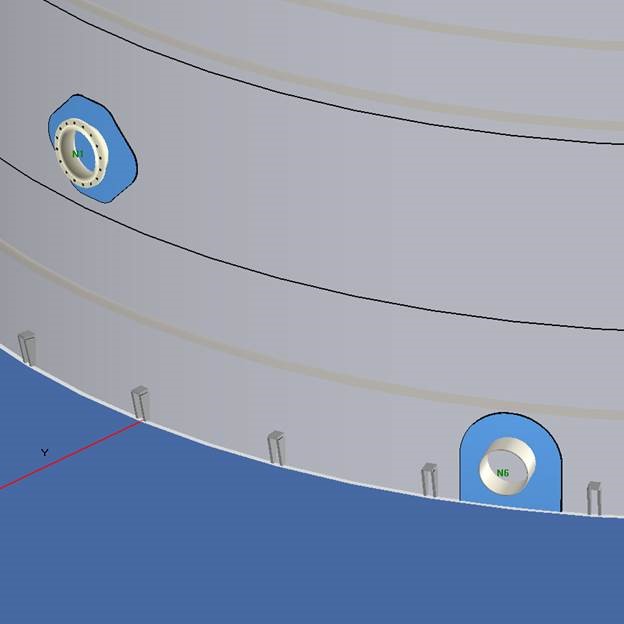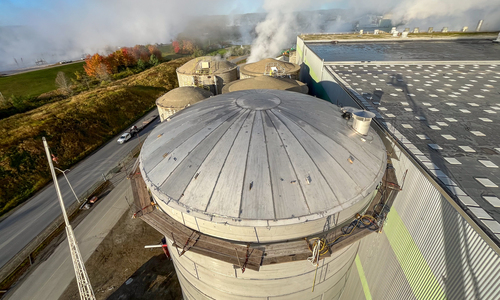A Step-by-Step Take A Look At the Installation Refine of Welding Assessment Techniques
Welding assessment is an important process that assures structural stability and safety. The setup of examination strategies involves numerous systematic steps, each important to achieving reputable outcomes. From planning and device selection to performing aesthetic and non-destructive tests, each phase demands cautious focus. Understanding these procedures can considerably boost quality control in welding jobs. What challenges emerge in implementing these techniques, and just how can they be effectively resolved?
Understanding the Significance of Welding Examination
Welding evaluation is a vital element of guaranteeing structural integrity and security in construction and manufacturing processes. This method entails examining bonded joints for problems, guaranteeing that they fulfill details standards and guidelines. By systematically gauging weld high quality, assessors can identify concerns such as fractures, gaps, and insufficient fusion, which can compromise the stamina and sturdiness of frameworks.
The importance of welding assessment expands beyond immediate safety concerns; it helps protect against pricey failings and possible hazards in the long term. Efficient examination methods foster conformity with industry requirements, thus boosting the general reliability of welded elements. Furthermore, a robust inspection process adds to maintaining the online reputation of suppliers and contractors, as it guarantees clients of the top quality of their projects. Inevitably, recognizing the relevance of welding inspection is vital for promoting risk-free building and construction practices and making certain the durability of important framework and products.
Picking the Right Devices for Assessment
When choosing the appropriate tools for examination, it is necessary to contemplate the particular requirements of the welding procedure and the products involved. Different evaluation techniques, such as visual, ultrasonic, and radiographic testing, require unique tools tailored to their unique needs. For aesthetic examinations, tools like magnifying calipers and glasses are essential for examining weld top quality. Ultrasonic testing needs customized tools with the ability of transmitting and getting sound waves to detect interior defects. Radiographic screening, on the other hand, makes use of X-ray or gamma-ray resources alongside sensitive film or digital detectors to expose disparities.
Additionally, individual safety tools (PPE) is necessary to assure the security of assessors during assessments. Choosing the right tools not just boosts the accuracy of examinations however likewise adds to the total stability and safety and security of the welding job. An extensive understanding of readily available tools and their applications is vital for efficient welding inspection.
Preparing for the Examination Refine
Before initiating the examination process, it is vital to establish an extensive strategy that describes the scope and purposes of the examination. This strategy needs to include specific requirements that define what comprises acceptable high quality in the welding job being checked. Recognizing the relevant codes and standards is vital, as they will certainly lead the assessment criteria and techniques.
In addition, workers associated with the examination has to be adequately educated and accredited in welding inspection techniques to guarantee reliability and accuracy. A checklist can be helpful in arranging the different elements of the assessment, varying from devices readiness to ecological problems that might influence the analysis.

Finally, logistical considerations such as organizing, readily available resources, and communication in between employee must be resolved. By preparing methodically, examiners can enhance the efficiency of the assessment and make certain that all important factors are appropriately considered prior to waging the assessment itself.
Performing Aesthetic Inspections

Conducting aesthetic inspections is an important action in the welding assessment process, needing mindful prep work to ensure effective analysis. Inspectors must be acquainted with vital defect indicators that can signal potential issues in weld top quality. By concentrating on these facets, one can improve the overall dependability of the inspection outcomes.
Preparing for Visual Examination
Visual inspection serves as an essential very first step in the welding inspection process, assuring that any type of potential problems are determined early (API 650 Welding Inspection). Appropriate preparation is necessary for efficient aesthetic assessment. Examiners ought to begin by assessing pertinent documentation, consisting of welding procedures and specifications, to understand the project requirements. They need to gather needed tools, such as multiplying glasses, flashlights, and appropriate individual protective devices (PPE) A detailed examination of the examination location is critical; assessors must verify it is clean and totally free of obstructions. In addition, it is important to develop perfect browse around here lights conditions to boost exposure of welds. By taking these primary actions, inspectors can develop a setting for recognizing discrepancies and assuring the stability of the welded structures
Trick Defect Indicators
A detailed understanding of essential problem signs is vital throughout visual examinations to ensure the quality and safety and security of welded joints. Inspectors need to focus on specific indicators such as cracks, porosity, damages, and incomplete blend. Splits might appear as sharp lines and can endanger structural stability. Porosity manifests as little openings that can deteriorate weld toughness. Undercuts, which are grooves along the weld side, can cause stress and anxiety concentration. Insufficient blend suggests that the weld steel did not properly bond with the base product, causing a weak joint. By methodically identifying these defects, inspectors can identify compliance with market criteria and enhance the general dependability of bonded structures, ultimately adding to much safer operational problems.
Implementing Non-Destructive Examining Methods

Various non-destructive testing (NDT) techniques are important to guaranteeing the integrity of bonded frameworks without compromising their capability. These approaches permit examiners to assess weld top quality and detect flaws without causing damages to the products being tested. Typical NDT methods consist of ultrasonic testing, radiographic testing, magnetic bit screening, and dye penetrant testing. Each technique offers a specific objective, dealing with various kinds of problems such as splits, porosity, or incomplete blend.
Applying NDT methods needs a systematic method, beginning with selecting the proper approach based upon the products and the nature of the weld. Educating workers in these methods is crucial for exact outcomes. In addition, developing clear procedures and requirements assurances uniformity throughout the inspection process. By incorporating NDT into the welding assessment operations, companies can enhance the integrity of their products while reducing prospective threats connected with structural failings. This proactive method ultimately adds to maintaining safety and top quality requirements in welded buildings.
Documenting and Examining Examination Results
Efficient documents and analysis of examination outcomes are vital elements of the welding examination procedure. Precise documents of assessment searchings for offer as a reference click over here now for high quality assurance and compliance with market criteria. API 650 Welding Inspection. Assessors need to use structured forms or digital systems to log information such as the kind of weld, examination approaches utilized, and any discrepancies identified throughout the analysis
Extensive analysis is crucial once information is gathered. This involves contrasting results versus established requirements to recognize fads or persisting issues. Analytical tools may be used to evaluate issues and analyze their influence on total weld quality.
Effective communication of searchings for to relevant stakeholders is essential. Reports and recaps must be clear and concise, highlighting crucial understandings and suggestions for restorative activities. By methodically documenting and analyzing inspection outcomes, companies can promote constant improvement in welding techniques and improve product honesty.
Frequently Asked Inquiries
What Certifications Are Needed to Become a Welding Assessor?
To become a welding inspector, one normally requires pertinent certifications such as AWS CWI, along with experience in welding methods, understanding of welding codes, and efficiency in examination techniques to assure high quality and safety criteria.
How Often Should Welding Inspections Be Carried Out?
Welding assessments must be carried out routinely, generally after each weld is completed, and regularly throughout projects. Variables such as project intricacy, industry standards, and regulatory requirements can influence the regularity of these inspections.
What Is the Expense of Welding Assessment Services?
The cost of welding evaluation services differs significantly based on aspects such as project dimension, intricacy, and place. Generally, rates vary from $100 to $150 per hour, with extra fees for specialized testing and certifications.
Are There Certifications for Welding Inspectors?
Yes, there are various certifications for welding assessors, including those used by the American Welding Culture (AWS) and the International Institute of Welding over at this website (IIW) These qualifications assure examiners possess the necessary skills and knowledge for reliable examinations.

Just how Do I Choose an Assessment Service Service Provider?
To select an inspection provider, one ought to assess certifications, experience, sector reputation, and customer testimonials. In addition, contrasting service offerings and rates can assist assure the chosen provider fulfills specific project requires efficiently.
In addition, workers included in the inspection should be properly educated and accredited in welding inspection strategies to ensure integrity and accuracy. Conducting visual inspections is a crucial step in the welding assessment process, calling for cautious preparation to ensure efficient analysis. Visual examination offers as an essential first step in the welding evaluation procedure, assuring that any possible problems are identified early. Efficient documentation and analysis of inspection outcomes are necessary parts of the welding evaluation procedure. Welding evaluations must be carried out on a regular basis, normally after each weld is completed, and regularly during jobs.